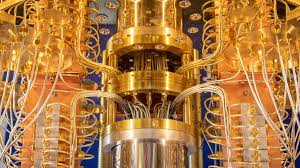Edge Computing:--
Edge Computing:- is a distributed computing paradigm that brings
computation and data storage closer to the location where it is needed, to
improve response times and save bandwidth. Instead of sending data to
centralized data centers for processing, edge computing processes data at or
near the source of data generation.
Key Characteristics of Edge Computing:--
1. Proximity: Data processing occurs near the
data source, reducing latency.
2. Real-Time Processing: Immediate processing of data for
real-time applications.
3. Bandwidth Efficiency: Reduces the amount of data sent
over networks by processing it locally.
4. Improved Security: Data can be processed and stored
locally, reducing exposure to potential breaches during transmission.
Example to Understand Edge Computing
Example: Smart Traffic Lights in a City
Scenario: A city wants to manage its traffic flow efficiently to reduce
congestion and improve safety. Traditional systems send data from traffic
cameras and sensors to a central server for processing, which can cause delays.
Implementation:
1. Edge Devices:
o Traffic cameras and sensors are
equipped with edge computing capabilities.
o Each traffic light has a small, local
processing unit (an edge device) that can analyze data in real-time.
2. Data Processing:
o Cameras and sensors collect data
about vehicle movement, pedestrian activity, and traffic congestion.
o The edge devices process this data
locally at each intersection.
3. Real-Time Decision Making:
o The edge device at a traffic light
analyzes the data and determines the optimal timing for changing lights.
o For example, if the sensor detects
heavy traffic in one direction, it can adjust the light timings to allow longer
green lights for that direction.
4. Communication:
o Traffic lights can communicate with
each other directly to coordinate and optimize traffic flow across multiple
intersections.
o This reduces the need for data to be
sent to a central server, minimizing latency and ensuring quicker responses.
Benefits:
- Reduced
Latency:
Decisions are made locally, resulting in quicker adjustments to traffic
lights.
- Improved
Traffic Flow:
Real-time data processing helps optimize traffic light timings, reducing
congestion.
- Enhanced
Safety: Faster
response times to changing traffic conditions can improve pedestrian and
vehicle safety.
- Bandwidth
Efficiency:
Only essential data is sent to the central server for long-term analysis
or monitoring, reducing the amount of data transmitted over networks.
Layman's Explanation: Imagine you're driving through the city, and every traffic
light knows exactly what's happening around it because it has its own
mini-computer. This mini-computer helps the light change quicker or stay green
longer based on how many cars or people are nearby. This way, you spend less
time waiting and more time moving, all because the "brain" of the
traffic light is right there with you, not miles away in some distant server.
Edge computing makes everything faster and more efficient by
bringing the power of computing right to where it's needed most.












